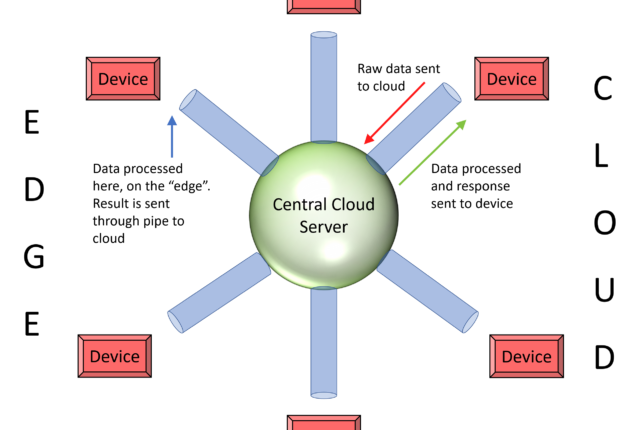
5 Reasons Harsh Accelerations should be Avoided
Harsh accelerations are a subtle, yet big threat to fleet safety. We all know what it looks like, too. A last second throttle to beat a yellow light, gunning it once a light turns green, or even punching the gas to pass someone on the highway. Even though they seem justified—I know I have justified harsh accelerations to myself many of times—they can be very costly, especially to fleets and their driver’s safety.
Here are 5 reasons why fleet drivers should avoid harsh accelerations.
5 Reasons Harsh Accelerations should be Avoided
1. Overall Driver Safety
Harsh accelerations are dangerous to not only fleet drivers, but likewise the fellow drivers they share the road with. When accelerating rapidly, it leaves very little room for error, which is very common on the road. For example, when someone tries to accelerate past another driver on a highway, that harsh acceleration makes the driver unable to react to lane merges or sudden braking. In an environment as variable as the road, harsh accelerations hinder the driver’s ability to stay safe.
2. Harsh Acceleration leads to Harsh Braking
If a driver routinely accelerates harshly, there is a correlation that they will also brake harshly too. Harsh braking is another dangerous driving practice and increases a driver’s probability of collision, especially for fleets with large trucks. Most harsh braking situations derive from either a harsh acceleration gone awry (light turns red, car in front brakes, etc.) or from the driver not leaving enough space between them and the vehicle in front of them.
When considering a big rig truck, the truck’s stopping time when traveling 55 mph is 6 seconds. In that time, the truck will cover approximately 510 feet before completely stopping. To put that into perspective, that is almost two football fields long! With that much ground being covered during braking, it is easy to see how relying on harsh brakes is a dangerous situation.
3. Fuel Costs
Harsh accelerations burn more fuel compared to gradually accelerating to the desired speed. When the driver punches the gas pedal, it tells the engine that a lot more speed is required, causing it to burn lots of fuel rapidly instead of a controlled amount of fuel when speed is gradually increased.
According to the U.S. Department of Energy, bad driving practices such as harsh acceleration and harsh braking can lower fuel mileage by 15-30% on the highways and 10-40% in stop-and-go traffic. Knowing that fuel is one of the biggest expenses for fleets, this inefficiency can have immense impacts on overall fuel costs for the fleet. To solve this, the U.S. Department of Energy suggests using driver feedback devices, such as Positioning Universal’s FT7500, as it was calculated in a U.C. Davis study that they can help fleets improve fuel economy by up to 10 percent.
4. Wear & Tear on the Vehicle
Harsh accelerations—and its partner, harsh brakes—cause extra wear and tear on the vehicle. When throttling the gas, it more often than not leads to slamming on the brakes. Imagine trying to gun it past a yellow light but having to stop short because you do not make it. These harsh stops overheat the brakes and damage the pads faster than normal braking. Likewise, harsh braking has similar effects on vehicle tires. With harsh braking and harsh accelerations, the tires tread burns faster, and the life of the tire is significantly reduced because of this. Both of these factors lead to higher maintenance costs for fleet vehicles, which are already very high.
5. Cargo can be Compromised
With harsh accelerations and harsh braking, cargo in the vehicle can move and potentially be compromised. We all have felt ourselves jolt forward or whiplash back into the seat when braking or accelerating rapidly, and similarly know how cargo can fall over in our cars. The same holds for cargo in fleet vehicles. With harsh accelerations and braking, cargo can slide and sometimes even fall over and break, depending on the items. That can be very costly to fleets as not only will the products be damaged, but if it occurs consistently, then partnerships with clients can be broken. Delivering cargo safely to their destination is critical to the success of fleets, and for that reason, harsh accelerations must be avoided.
Conclusion
These main reasons only crack the surface of why harsh accelerations should be avoided as much as possible. There are situations where harsh acceleration and braking are justified—for example avoiding collisions that happen in front/around you—but overall, safe driving includes minimizing these practices. Not only will doing this keep the fleet safer on the road, but it also helps cut costs substantially. Devices such as Positioning Universal’s FT7500 have advanced technologies to track harsh accelerations, braking, and collision risks in general, which can now be paired with the AI Fleet Camera Solution to provide video feedback of these events as well. Being able to monitor when these events occur, and visually see the context around them can significantly improve driving behaviors and help fleets stay safe.




